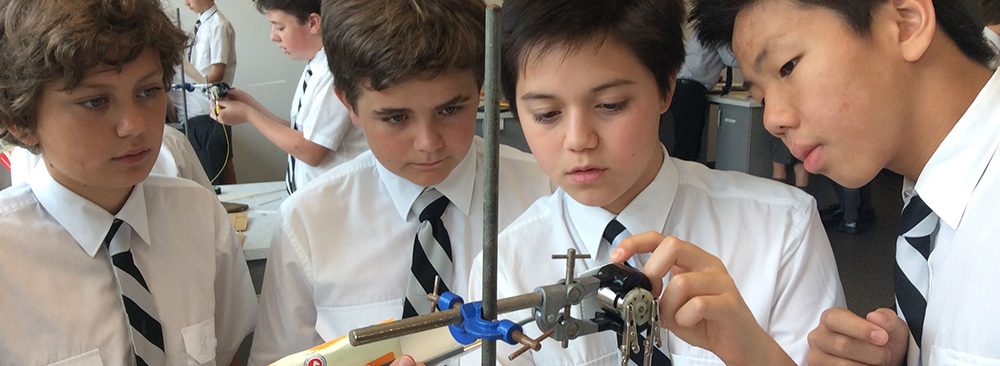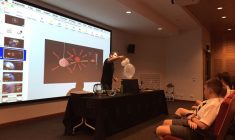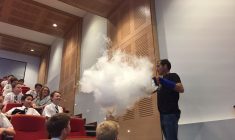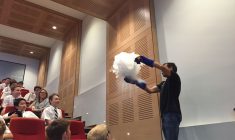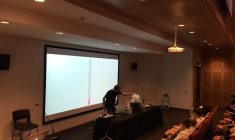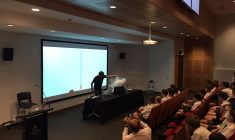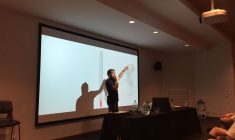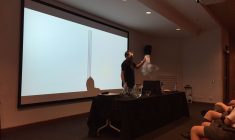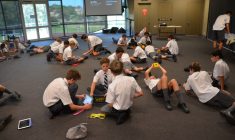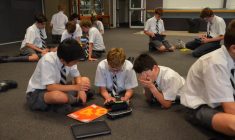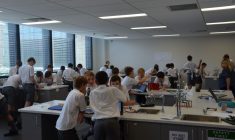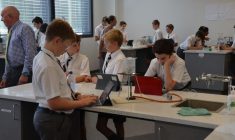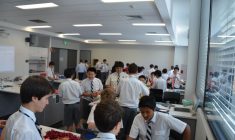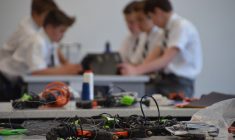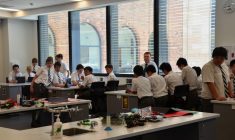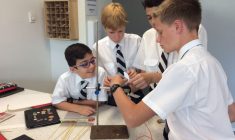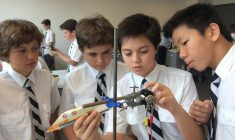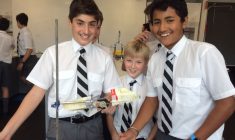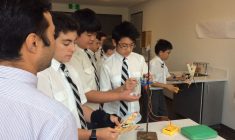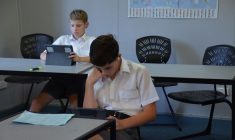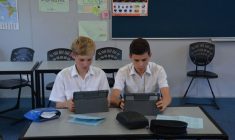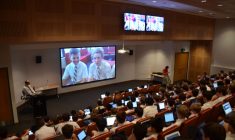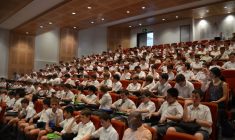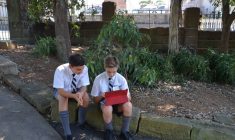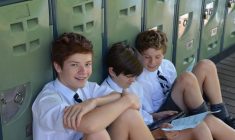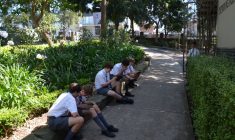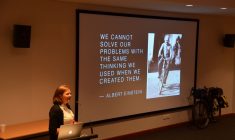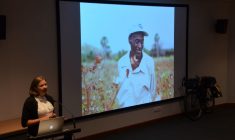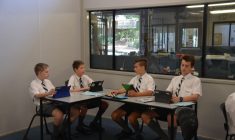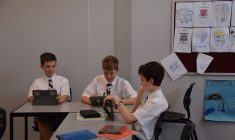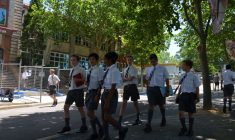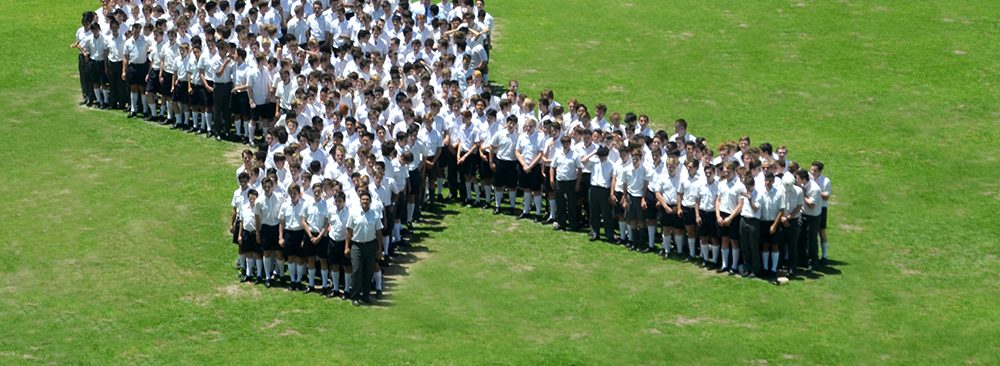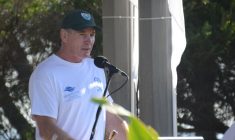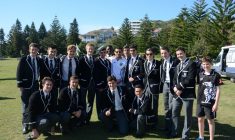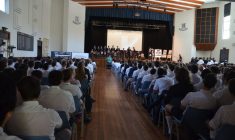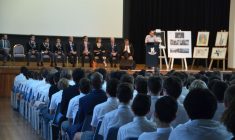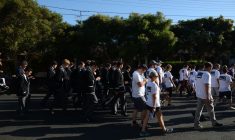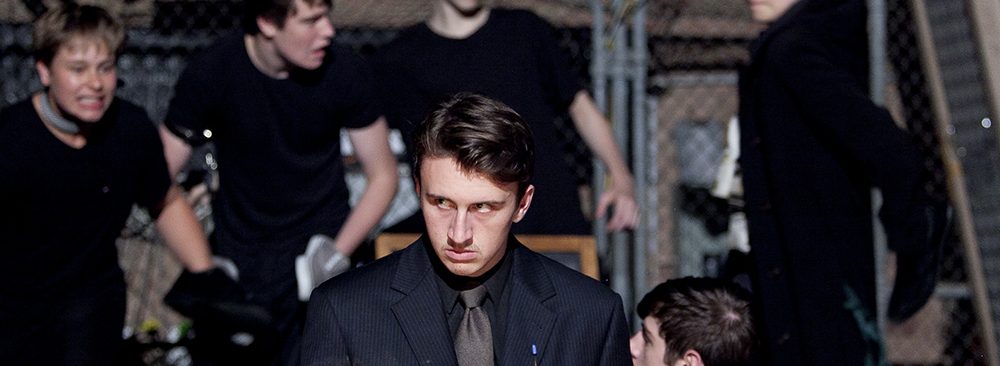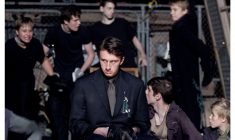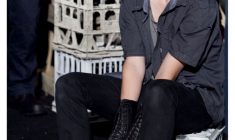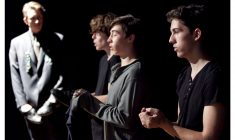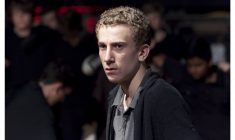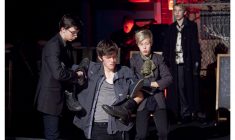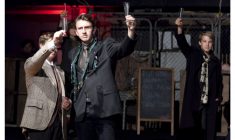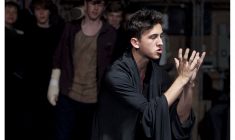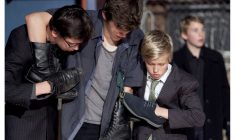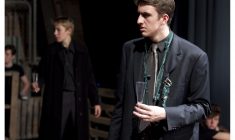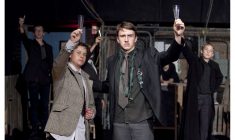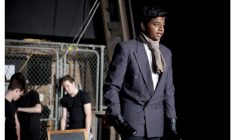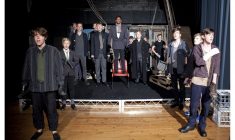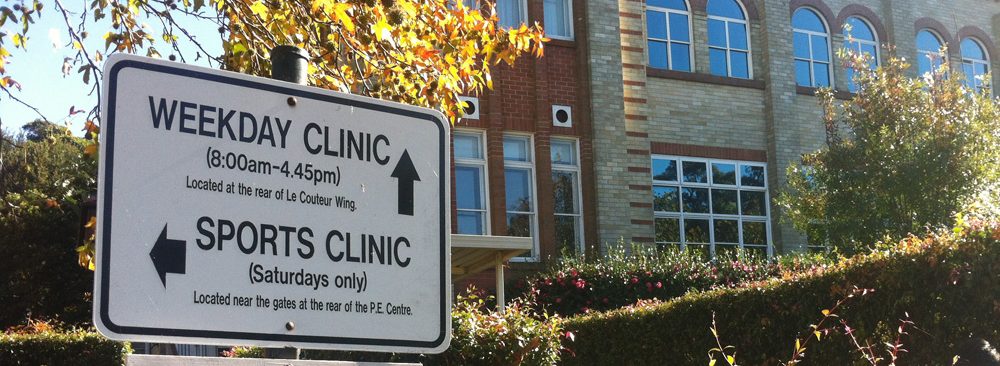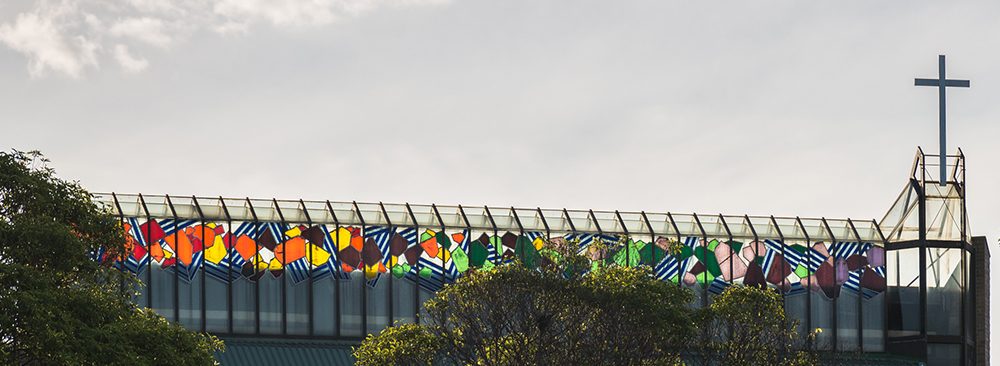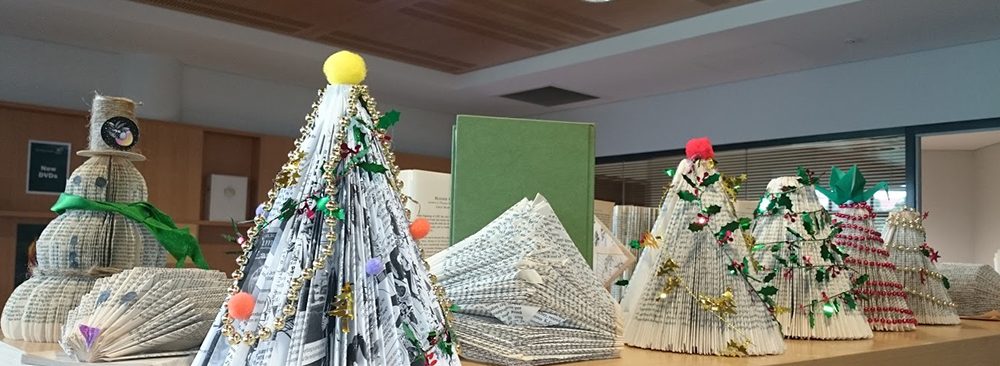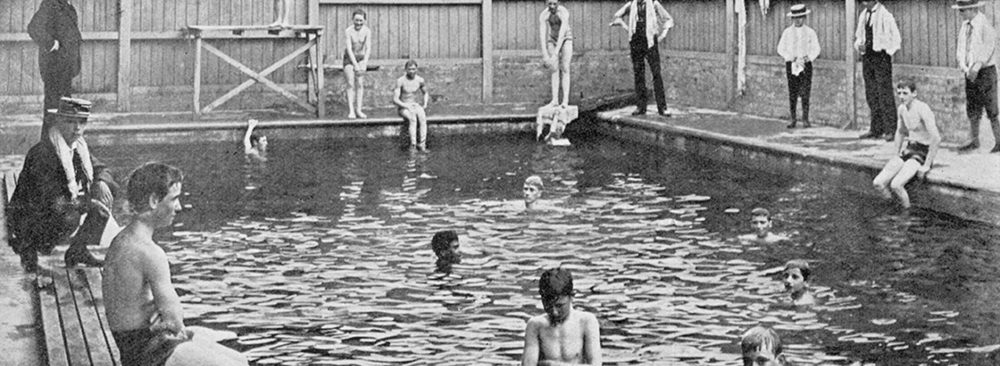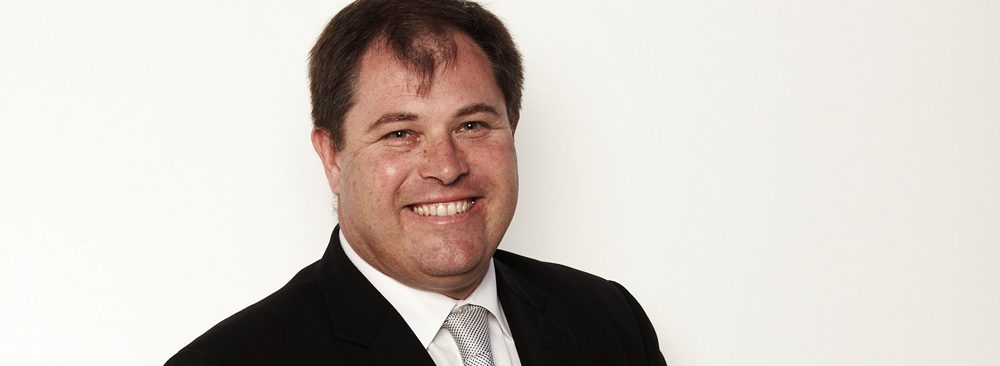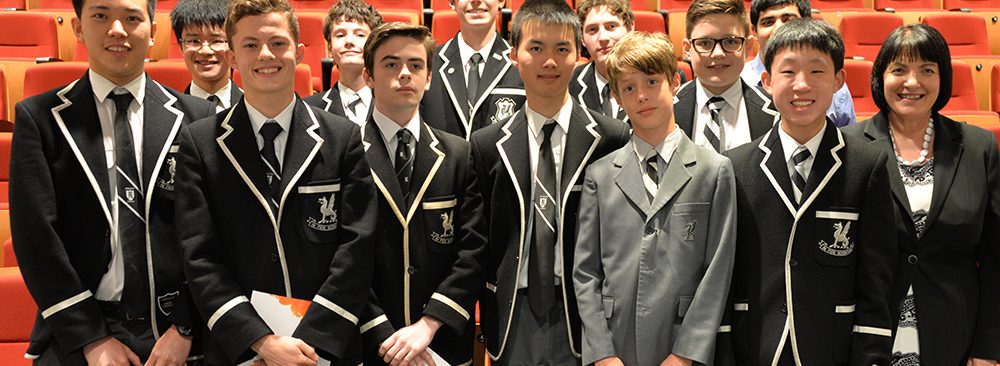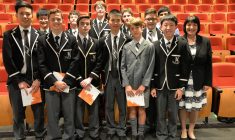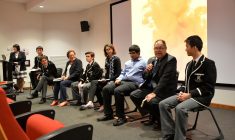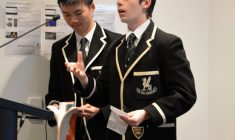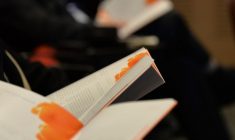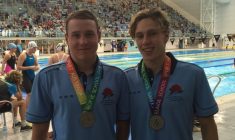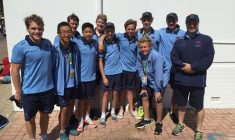New Enigma Launch 2015
Newington’s annual journal of poetry, prose and artworks was launched at a warm-hearted gathering of students, family and staff on Thursday 3 December in the OBLT. Hosted by the Year 11 editors and writers Eric Sheng (11/ME), Fletcher Howell (11/JN) and James Paoloni (11/MA), co-ordinated by Head of Library Dr Yvonne Smith, the evening showcased boys reading their works and commenting on the many things that inspired their creativity. As well as the editors, boys sharing their works at the launch included Sachin Kinger (12/FL), Jonathan Lee (8/FL), Justin Ting (12/JN), Isaac Carriline (8/MO), James Oakley (12/PR), Barnaby Haslem (7/ME), Marco Stocca (11/LE), Aiden Chan (11/PR) and Benjamin Walsh (6/CO). Following the readings, a panel of students and staff held a lively discussion on the value of literature in the modern world. Deputy Headmaster Dr Andrew Hirst shared his recollections of inspiring reading, while Ms Gina Simmonds (Library Operations Manager) and Mrs Alison Rout (Research Teacher-Librarian) talked about novels that moved and challenged them. It was a wonderful occasion for celebrating the power of the imagination so evident in the work Newington boys are producing throughout the year.
Address from Head of Library, Dr Yvonne Smith
Good evening Dr Hirst, parents and friends, members of staff and student contributors.
I warmly welcome you to the official launch of New Enigma, Newington’s annual journal of poetry, prose and artworks. It has been published, according to the archive, since 1995 and its title, in my view, refers to the “enigma” or mystery of creativity in the human mind. The term “enigma” came into the English language around 1530 (just before Shakespeare’s time), from the Latin ‘aenigm’, in turn based on a Greek work whose origin means ‘to speak in riddles’. Our aim in launching New Enigma tonight is not to speak in riddles, like Gollum and Bilbo in The Hobbit, but to celebrate together our students’ achievements as exemplars of the nature of human imagination. The manner in which imagination creates visions and ideas, using only words or paints or pencils, is a riddle to us. A great mystery remains, even in these days of brain science and MRI imaging. For no one has ever fully glimpsed that moment when human creativity brings something new to life in visual arts, in lines of poetry or in pages of prose. We can watch someone compose or write or draw or paint, but what causes this miracle to happen in the mind and how it happens is hidden.
It is a wonder of the world and it is alive here at Newington, in line with our ethos that aims to foster imaginative and insightful education for all boys. Tonight we see this mystery clearly at work in the New Enigma edition which we hold in our hands. Newington boys have focused their intellects, feelings and passions into these works. Through them we express the enigma of human imagination, even as we celebrate its power, beauty and achievement.
I warmly congratulate those boys whose work is being published and thank everyone who offered a contribution for consideration. Creative boys are nurtured by creative parents, grandparents and the wider family, as well as school and the society around them. For that reason, I congratulate all families represented by their sons’ work in New Enigma. In a distinct way tonight, too, we celebrate and further the creative and philanthropic vision that imagined Newington College into being 152 years ago.
New Enigma is distributed freely to each family in the Newington community, being handed out as guests come to the Annual Prize Giving at Sydney Town Hall. Tonight we are pleased to give you the opportunity to be the first readers of New Enigma 2015 and, hopefully, its first advocates.
The theme for this edition is ‘Transferences’ – a word that points us to those universal experiences of ‘carrying across’, of ‘transferring’ that involve our bodies, feelings, ideas and experiences. Some of the pieces explore physical transferences, journeys that take people from one country to another, while others detail emotive and psychological shifts in how characters perceive their worlds as they are carried across to different states of being. Characters in some stories change from indifference towards one another to love and acceptance. Others face the challenge of despair, fear and hopelessness in their quest for meaning. The artworks counter the beauty of form and vibrant colour with troubling questions such as how we find a home, how we see animals valued for their skin products, the truth of our individual identities and whether our lives can become trapped in conformity.
I want to thank the student editors Eric Sheng, James Paoloni and Fletcher Howell for their valued contributions and for arranging the interactions of writing and art in this year’s New Enigma. The editors want the poetry, prose and artworks to interact in our minds and speak to each other in surprising and unexpected ways. I hope you will take the time to let each piece speak to you, raise images and questions in your mind and relate to your own life experiences.
My thanks to English teachers Mrs Rosalind McKenzie, Ms Zoe Cookson. Ms Kate Shepherd, Mr Terence Priester, Mr Allan Pride and Head of English Mr Richard Wheeldon who gathered students’ work for the editors’ consideration. The assistance of Ms Marina Hinves, Ms Hannah Chapman and the Art Department headed by Mr Andrew Thompson has been invaluable in making the artworks of HSC and IB students available.
Most of all, I would thank our designer Mr Stephen Houraghan and the Head of Communications at Newington, Ms Pam Hatfield, for overseeing the whole production. Stephen’s skills and creative flair in designing the edition you have in your hands is outstanding. Pam took a keen interest and made sure New Enigma is a high quality production. It takes a great deal of time to put together all the facets of a publication such as New Enigma, especially in this busy time of year.
In 1893 the great British artist, designer, writer and book craftsman William Morris gave a lecture on the printing of books for London’s Arts and Crafts Exhibition. He praised the way early craftsmen of moveable type printing during the Renaissance had made it ‘a matter of course’ that they would take care ‘that beautiful form should always be part of their production’. In his view, ‘a work of utility might also be a work of art’. The feel and beauty of a printed book still matters a great deal in this digital age. I am delighted to present New Enigma 2015 to the Newington community as not only a work of utility, but as a work of art.

